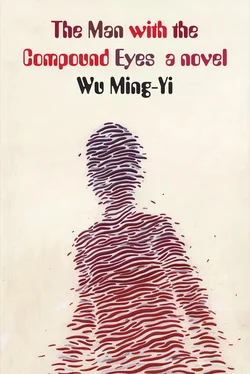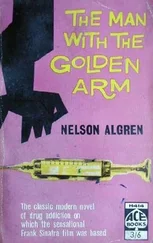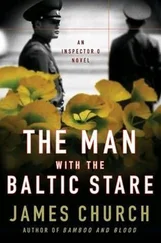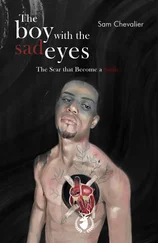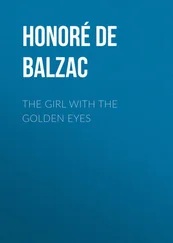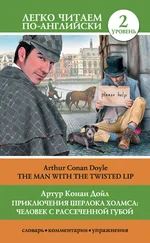Alice has brought some food and a temporary house. It is a bit stuffy, but at least we don’t get rained on. It’s a bit like the house I built on the island of Gesi Gesi. She rubbed a strange-smelling ointment on my wound and told me to swallow some other remedies.
She lives in the wooden house, and I live in the temporary house. At first she wanted me to live in the wooden house, but since she saved my life, I cannot live in a nicer house than her. That’s not the way of Wayo Wayo. At first she couldn’t understand anything I said, but gradually we have come to recognize the scales and tails of speech, to realize the fish eyes of what the other is saying.
That strange black-and-white creature is called a “cat,” and Alice calls her Ohiyo. I asked, “What does Ohiyo mean?” Alice released a torrent of words once she gathered what my question was, but it wasn’t hard to guess that Ohiyo is what you say to greet someone in the morning.
“Ohiyo.” I try pronouncing the name, but the word feels awkward on my tongue. The cat just walks away when she hears me call.
“What about you? What do the people of Wayo Wayo say?” I think that’s what she wants to ask. I have told her our island is called Wayo Wayo.
We say, “i-Wagudoma-siliyamala.”
“What does that mean?” she said, raising and lowering her shoulders; I gather that here as on Wayo Wayo this gesture means, “I don’t understand.”
I point at the distant sea and spread my arms to indicate that today the sea is calm. Today the sea appears holy and tranquil, like a sleeping animal or a dead whale. “It’s very fair at sea today.”
“i-Wagudoma-siliyamala.”
“i-Wagudoma-siliyamala,” she repeats, but these words are a bit hard on her tongue.
Alice seems unaccustomed to this kind of life. I often find she can’t get to sleep at night. She has a strange box: you press it and it gathers part of the world inside, like an eye that can remember what it sees. She uses the box to hold the “reflections” of flowers, birds and bugs, which she then compares with “reflections” in her books. In those books are the “reflections” of the “reflections” she has seen. I wish I could draw a picture like that, a picture of a reflection that looks just like the real thing.
She’s also brought things called “tables” and “chairs” and put them outside the wooden house. If the weather is nice she sits in a chair at a table and uses a “pen” (I finally understood that those twigs I drew with during my stay on the island of Gesi Gesi are called “pens”) to write what appears to be words in a book. She always writes for a long time, and all the while her eyes are dreaming.
I asked her what she was writing and she said she was “writing a story.”
“What are you writing a story for?”
“I am writing a story to save a life,” she said, I guess.
She likes to look at the pictures on my skin and ask me what they mean. I’ve told her the story behind each picture, the story on my shoulder, the story on my back, the story on my elbow. But I don’t know if she understands my stories or not. Some of the pictures on my body faded, so I’ve drawn new ones over them. The picture on the left side of my belly is of the day Alice saved me. I used the pen she gave to me to draw her reflection in my eyes when I was held fast in the earth. And the trees behind her, too. She looked sad when she saw the picture.
She’s fed me things I’ve never eaten before. I was getting familiar with the alpine terrain, so when my leg got a bit better I tried to make the house a bit bigger with some wood. I put up an awning, so that even if it rains she can still write outdoors sitting under it.
Sometimes first thing in the morning Ohiyo brings back things like crabs or rats and puts them on the steps of the wooden house. I think she wants to offer tribute to Alice.
When Alice isn’t writing she likes to talk to me. At first we did not know what the other was saying but gradually we got better and better at “sensing” meaning. She tells her stories and I tell mine, of Wayo Wayo, Rasula, my Yina, the Sea Sage and the Earth Sage, and the beached whales. I don’t think it really matters if she understands me or not, because to Wayo Wayo islanders words can be smelled, touched, imagined and closely followed with your gut the way you follow an enormous fish.
I like to tell my stories and to hear Alice tell hers. I like the sound of her voice and the look on her face when she pets Ohiyo. Sometimes her voice reminds me of my Yina, other times of Rasula. So as long as the rain isn’t too heavy, we sit together day after day in the morning, gazing at the sea. I tell her, “Let me tell you about Wayo Wayo, to let an image of Wayo Wayo grow in your mind.”
Ours is an island of warriors, a place where dreams gather, a way station for shoals of migrating fish, a coordinate of the rising and setting sun, and a rest stop for water and for hope. Our island is woven out of coral and covered with the droppings of seabirds. Kabang has formed a small lake upon Wayo Wayo out of His tears, a lake we depend on to eke out our existence.
In the beginning, all things imitated one another: the island imitated the sea turtle, the trees imitated the clouds, and death imitated birth, so that everything was more or less the same. Originally our tribe lived deep in the ocean. We built a city in a trench, and Kabang gave us a kind of fluorescent shrimp to eat. In an underwater land of plenty, we didn’t have a care in the world. But, being the cleverest race in the sea, we discovered that there were many things tastier to eat than shrimp, and we kept reproducing, feeding, migrating, expanding our city without restraint to satisfy our every whim, until we had almost driven away or annihilated all the other ocean races. Finally we roused Kabang to anger.
Kabang resolved to punish us. One night the undersea volcanos at the two ends of the ocean erupted, a great murky cloud engulfed our city, and our ancestors emerged upon the face of the deep. But just then a school of dosi dosi fish swam by, their scales glistening so brilliantly they blinded the eyes of almost all the ancestors. The blind did not know where to turn. The few tribesmen who had not gone blind were responsible for caring for those who were without sight. Among the sighted, the warrior Salinini speared a dosi dosi fish. He wanted to give it to the elders to eat, only to discover that every scale bore the unmistakable mark of Kabang. Only then did the people realize that they had angered Kabang, that this was His punishment, and that the only remaining recourse was to beg for His forgiveness. The brave Salinini resolved to swim alone to the Sea Gate at the extremity of rain and mist, for it was said that on the other side there was a True Isle, the abode of Kabang. Salinini wanted to go there and pray to Kabang, hoping to receive His mercy, that He might grant the people a new place to dwell.
Salinini swam for the time it takes for the sun to live and die a thousand times. His skin peeled, his hearing failed, and his back fin broke, but the rainbow was always in the distance. Finally, moved by Salinini’s determination, the omniscient Kabang decided to give the people another chance. He said: I can allow you an island, but your numbers must never exceed the trees growing thereupon. You will lose the ability to subsist in the sea for more than a short length of time, and you will be exiled from the vast, shoreless, open ocean. As prisoners on the island, you will know isolation and the fear of drowning. Once a friend, the sea will become a foe. It once gave but now it will take. Yet you must still rely on it, trust in it, worship it. Hearken, ye people, my song will turn to rain, my gaze to lightning, as my mind is all-pervading like the water of the sea. The words I utter will become the spirits of the deep. They will watch over you and edify you .
Читать дальше
